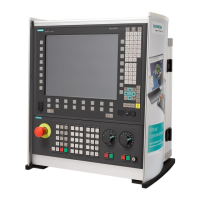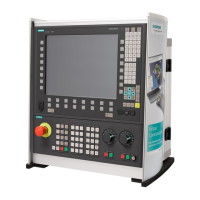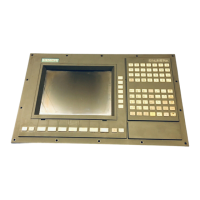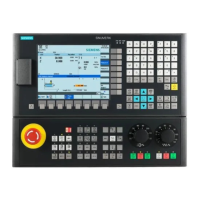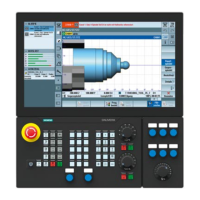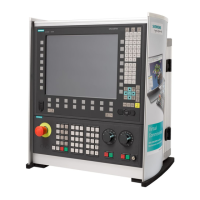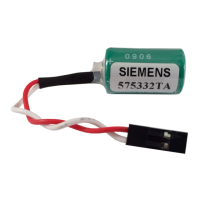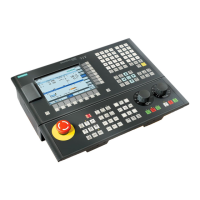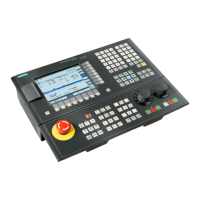12
03/2006
12.4 Standard system start-up via NC card
12-271
© Siemens AG 2006 All Rights Reserved
SINUMERIK 840D/810D Start-Up Guide (IADC) – 03/2006 Edition
The amount of DRAM to be reserved for the cycle/program processing from the
DRAM area must be defined in MD 18351: MM_DRAM_FILE_SIZE.
If the DRAM area is too small for the objects to be processed, then the objects
for which there is insufficient space in the DRAM area are saved to the SRAM,
but are still treated as DRAM objects. See below.
The directories defined in MD 11290: DRAM_FILESYSTEM_MASK are loaded
into the previously cleared DRAM when the control powers up. There they are
part of the passive file system.
When an object is loaded by the MMC/HMI software, the NC also saves it to the
FFS at the same time if the relevant bit for the directory was set in MD 11291:
DRAM_FILESYST_SAVE_MASK. In this way, the object can be made available
once more in DRAM after power up. It should be noted that writing to the FFS is
slow.
The changes go directly into DRAM as they are made. The changes are not
written to the backed up image in the FFS until the editor is closed.
While they are being saved to the FFS, a sign-of-life symbol is displayed on the
front operating panel (fan blade). To ensure that DRAM objects are not lost
while powering up, the NC must not be switched off until saving to the FFS is
complete.
When the SRAM is deleted, the NCK automatically deletes all the DRAM
backup files in the FFS on the NC card as well. This means that, when a
standard start-up file is read in, none of the old cycles are retained.
Size of the
DRAM area
Handling of
objects in DRAM
Changes to
objects in DRAM
Deleting SRAM
12 Re
lacin
Software and Hardware
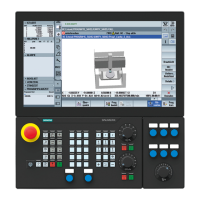
